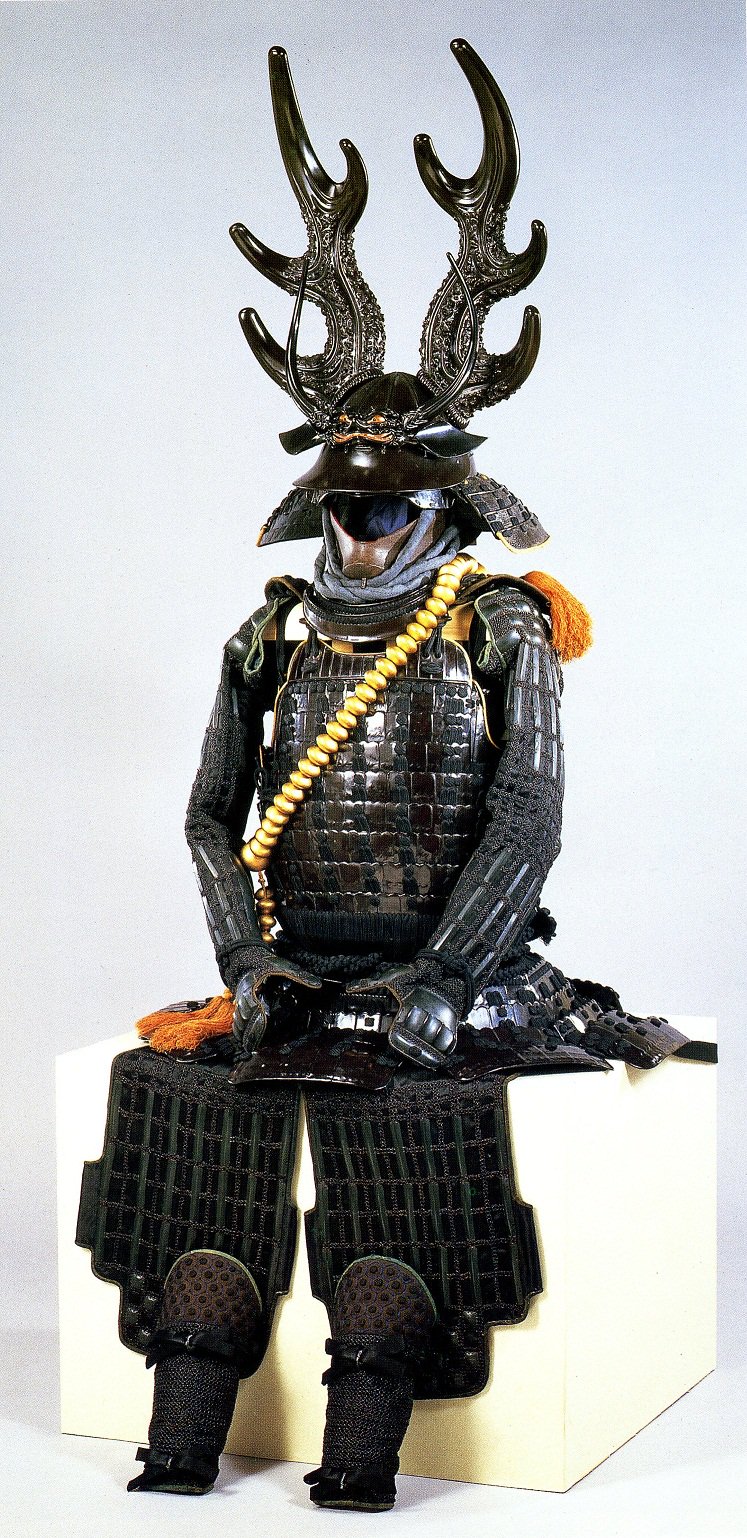The armor of the Sengoku jidai
 During the Sengoku jidai, a period that lasted from the Onin War in 1467 until the creation of the Tokugawa shogunate in 1600, many samurai clans struggled for autonomy or expansion at the expense of neighboring fiefs. Throughout these 150 years of Japanese civil wars, samurai families forged alliances with some clans and waged war with others, in a constant ebb and flow of power relationships. At this period of intense warfare, it was inevitable that samurai armor would undergo considerable changes.
During the Sengoku jidai, a period that lasted from the Onin War in 1467 until the creation of the Tokugawa shogunate in 1600, many samurai clans struggled for autonomy or expansion at the expense of neighboring fiefs. Throughout these 150 years of Japanese civil wars, samurai families forged alliances with some clans and waged war with others, in a constant ebb and flow of power relationships. At this period of intense warfare, it was inevitable that samurai armor would undergo considerable changes.
The utilization of ever-increasing numbers of troops to construct armies was primarily responsible for the evolution of samurai armor. This first necessitated the production of far more armors than in the past, as well as their construction using procedures that allowed for rapid repair in case of emergency. The yari, a long spear-like weapon with a pointed tip, and the teppo, a musket based after European designs, were deployed by these troops for the first time; they had previously been used less frequently.
As a result, samurai armor became lighter and more controllable, with folding edges that could block the tips of yari and sometimes (but only in more expensive models, like those made by Yukinoshita in Sendai) a construction that could deflect teppo bullets. In practical terms, sode (shoulder protection) and fukigaeshi (turn backs on the shikoro) are diminishing or disappearing, while intricate bindings are being replaced by easier-to-make and repair odoshi.
In conclusion, as the demand for speed and flexibility on the battlefield grew, the armor worn by samurai fighters throughout the Sengoku jidai period experienced substantial alterations. These modifications resulted to the creation of armor that was lighter, more flexible, and easier to repair, enabling samurai fighters to move swiftly and efficiently on the battlefield.
Copyright © 2016 - giuseppe piva - VAT: 05104180962

